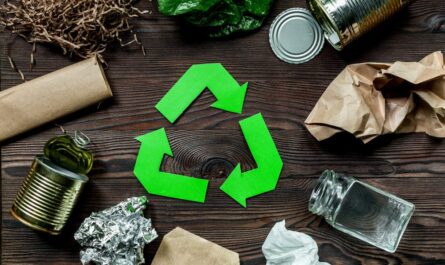Food containers have come a long way from the basic jars and baskets of the past. Advances in material science and manufacturing techniques have led to new types of containers that help keep food fresh for longer and make food storage and transportation more convenient.
Early Food Storage Containers
For millennia, some of the most basic and effective food containers were simply made from natural materials found nearby. Baskets woven from grasses, reeds or bamboo were lightweight and breathable, allowing food items to “breathe” while protecting them from bugs and spills. Ceramic jars and earthenware pots, often glazed on the inside, were durable and helped maintain moisture. Glass bottles and tin cans were introduced in the 19th century and became common for preserving and transporting foods over long distances. While simple in design, these early containers played an essential role in allowing communities to store food sources through different seasons.
Modern Materials Revolutionize Containers
The development of new materials in the 20th century radically changed food container design. Plastics like polyethylene terephthalate (PET) could be thermoformed into lightweight, shatter-resistant containers with high moisture and gas barriers. Aluminum foil was developed as an effective moisture and oxygen barrier. These modern materials extended shelf life by slowing nutrient degradation and preventing spoilage from microbes. They also enabled transparent packaging to showcase product appearance and convenient single-serving and resealable portions. Microwavable plastics allowed for reheating pre-packaged meals at home or on the go. Advances in nanotechnology and bio-based or compostable plastics point to more sustainable container options in the future.
Innovations in Food Storage Technology
Modern storage containers leverage various technologies to maximize freshness. Plastic containers often feature one-way vent systems that allow gases and moisture to escape but prevent new gases from entering. This “modified atmosphere packaging” slows the aging process. Some containers actively release ethylene absorbents that counteract the ripening agent produced naturally in many fruits and vegetables. Insulated containers help regulate temperature fluctuations that can degrade quality. Containers designed for sous-vide cooking seal tightly to allow for precise temperature-controlled low-temperature cooking in water baths. Advances in materials science and production techniques continually spawn new innovations tailored to specific food applications and user needs.
New Shapes and Formats
Food Container shapes and designs have evolved alongside lifestyles and consumption trends. Single-serve pods, snack bags, and bottles accommodate on-the-go eating. Meal kit delivery services rely on compartmentalized containers to portion out recipe ingredients that remain fresh until use. Resealable pouches replace rigid tubs for condiments, spreads and sauces to minimize waste. Stackable lightweight containers replace traditional Tupperware for meal prepping and lunches. Food delivery companies optimize container shapes for maximum space efficiency during transportation. Food storage containers now come in a dazzling array of creative formats to suit practically any situation. Material advances also enable emerging possibilities like intelligent containers that monitor contents.Functional, portable and space-saving containers meet the demands of modern lifestyles.
Sustainable Packaging Trends
As environmental concerns grow, sustainable packaging options are a priority. Companies explore alternatives to petroleum-based plastic with plant-based resins from sugarcane, bamboo or agricultural waste. Some utilize recycled plastic, glass or aluminum in container production. Biodegradable containers offer compostability, though high costs remain a barrier. Technologies like nano-cellulose produce strong, breathable materials from renewable wood fibers. New detection methods identify contaminants in recycling streams to improve the quality and scale of recycled plastic production. Consumers also drive more circular solutions through recycling participation. While plastic will remain prevalent, blending with other materials and designing for the circular economy point to greener container solutions.
Future Outlook for Food Containers
Advancing technologies will continue refining food containers. Intelligent packaging incorporating sensors may monitor contents and automate timed or conditional dispensing. Advanced materials may further enhance properties like gas barriers, insulation and ethylene removal. Nanotechnology and bioplastics offer improved performance with lower environmental impact. 3D printing promises on-demand customization. As dietary preferences evolve, so too will speciality-designed containers. Automation and robotics may transform container production. While fundamental needs remain, future containers will leverage the latest innovations to maximize both food freshness and sustainability. With focused research partnerships across industries, food containers can progress to effectively feed growing populations worldwide in greener, higher-tech ways.
In conclusion, food containers have taken various forms through history to safely store and transport nourishment. Modern advancements exponentially extend shelf life through innovative materials and enhanced designs tailored for lifestyles today. Looking ahead, sustainable solutions blending technology with renewable resources promise even brighter solutions that nourish both people and the planet for generations to come. Continued innovation will ensure food containers remain on the cutting edge of fulfilling humanity’s most basic yet meaningful need – access to healthy, delicious food.
*Note:
1. Source: Coherent Market Insights, Public sources, Desk research
2. We have leveraged AI tools to mine information and compile it




